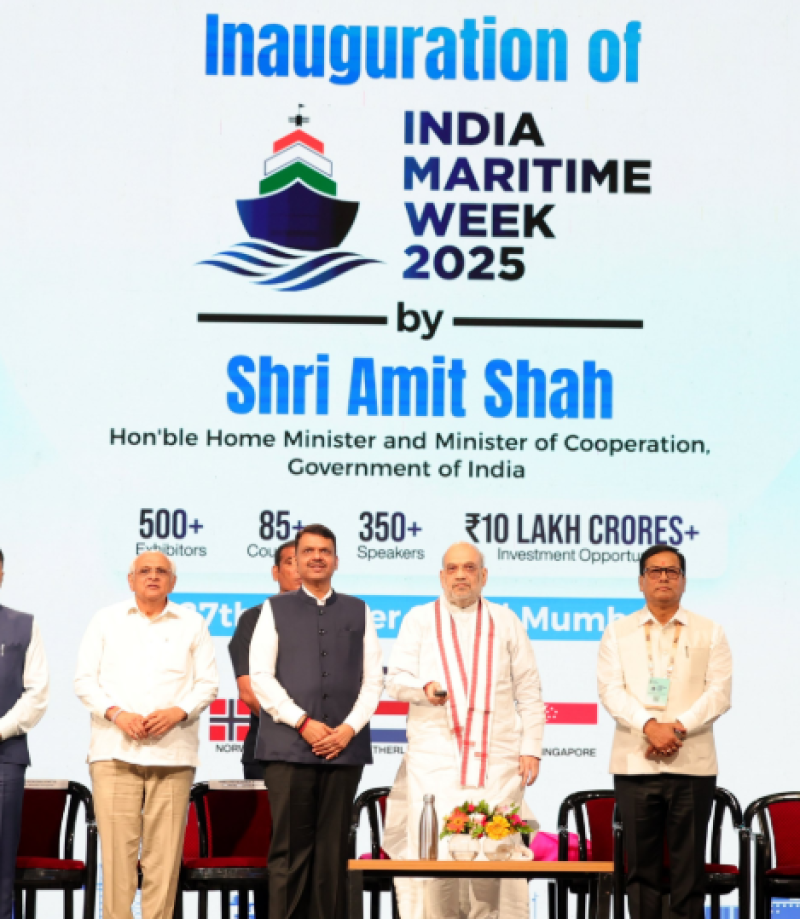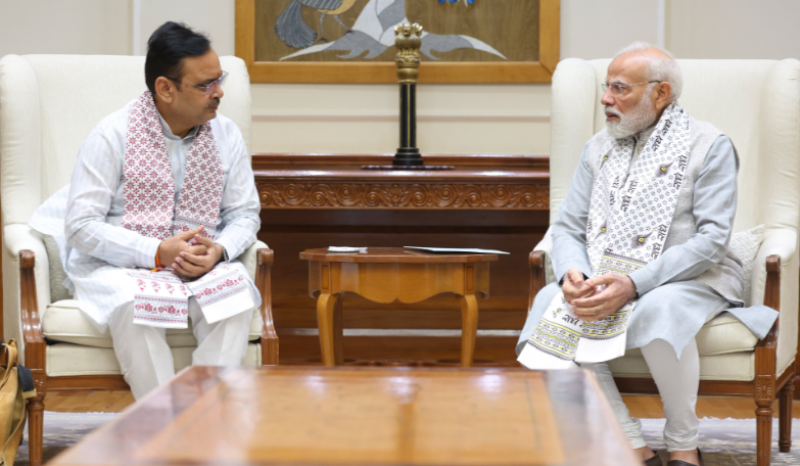Union Home and Cooperation Minister Amit Shah today inaugurated the India Maritime Week 2025 in Mumbai, in the presence of Maharashtra Chief Minister Devendra Fadnavis, Gujarat Chief Minister Bhupendra Patel, Goa Chief Minister Dr. Pramod Sawant, Odisha Chief Minister Mohan Charan Majhi, Maharashtra Deputy Chief Ministers Eknath Shinde and Ajit Pawar, and Union Minister of Ports, Shipping and Waterways Sarbananda Sonowal, among other dignitaries.
Addressing the gathering, Shah said, “This is India’s Maritime Moment — transforming the Gateway of India into the Gateway of the World.” He added that over the past decade, structural reforms introduced under Prime Minister Narendra Modi’s leadership have positioned India as a rising maritime power on the global map.
India’s Expanding Maritime Strength
Shah emphasized that India’s maritime strength and strategic position are reflected in its 11,000 km coastline, 13 coastal states and UTs, and an Exclusive Economic Zone (EEZ) spanning 2.37 million sq km, which attracts global investors and manufacturers. He highlighted that maritime states contribute nearly 60% to India’s GDP, and about 800 million people reside in these regions.
He noted that the 38 countries of the Indian Ocean Region (IOR) contribute around 12% to global exports, adding that the summit serves as a platform to connect global investors with India’s vast maritime potential.
India as a Bridge Between Indo-Pacific and Global South
“India, with its maritime position, democratic stability, and naval strength, is emerging as a bridge between the Indo-Pacific and the Global South—driving growth, security, and environmental progress,” Shah said.
With participation from over 100 countries, India Maritime Week has evolved into Indo-Pacific’s premier maritime dialogue platform. This year’s edition features 350+ speakers, 500+ companies, and over one lakh delegates, generating investment opportunities worth ₹10 lakh crore.
PM Modi’s Maritime Vision: Security, Stability & Self-Reliance
Shah reiterated that Prime Minister Modi’s maritime vision rests on three pillars — Security, Stability, and Self-Reliance. Through initiatives such as Sagarmala, Blue Economy, and Green Maritime Vision, India aims to rank among the top five shipbuilding nations globally.
He highlighted major connectivity initiatives including the India-Middle East-Europe Economic Corridor, Eastern Maritime Corridor, and North-South Transport Corridor, which strengthen India’s role in global trade.
Maritime Reforms and Projects Driving Growth
Under the Sagarmala programme, the government has identified 839 projects worth $70 billion, of which 272 projects ($17 billion) are completed. Projects like the $5 billion Great Nicobar Project and India’s largest dock at Cochin Shipyard are expected to boost maritime trade significantly.
The government has modernized legal frameworks, replacing outdated port laws with the Major Port Authorities Act, 2021, and introducing 106 new waterways under the National Waterways Act, 2016.
Building a Green Maritime Future
Shah stressed India’s commitment to a Green Maritime Future, promoting a balance between economic growth and environmental protection. He said, “India is mindful of Small Island States and Global South nations whose livelihoods depend on the oceans. For them, climate change is an existential challenge. Our vision is to build a green, prosperous, and shared ocean.”
From ‘SAGAR’ to ‘MAHASAGAR’: India’s Expanding Global Footprint
He noted that under PM Modi’s leadership, India’s maritime policy has evolved into MAHASAGAR — Mutual and Holistic Advancement for Security and Growth Across Regions, symbolizing India’s expanding global presence.


